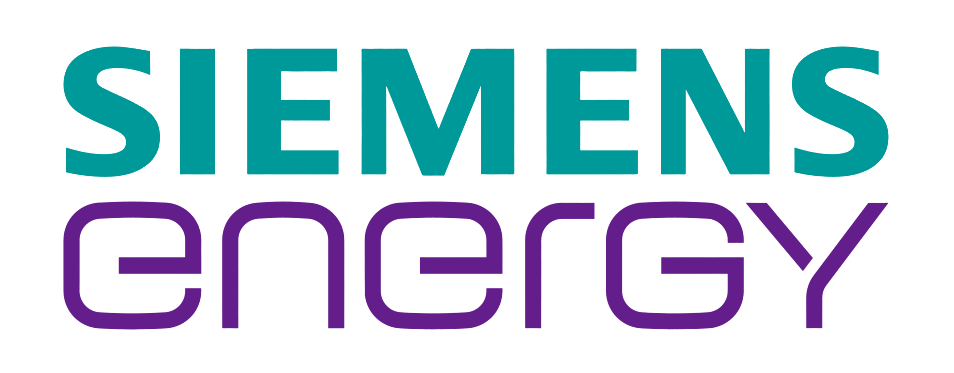Active Safety Regulations to Enable Mass Adoption of Advanced Safety Systems
Listen to this Article
mins | This voice is AI generated.
mins | This voice is AI generated.
Intelligent integrated active safety systems can mitigate many types of crashes and regulatory impetus is required for mass adoption
Future safety systems such as V2X, Exit-to exit highway driving, etc. that are being developed need regulatory clarity to be rolled out in the market. Technologies like 5G, low-cost sensors (LiDAR, radar, etc.), system-on-chip, sensor fusion, Artificial Intelligence, etc. are enablers of future automotive safety systems, rolling out of which is directly changing the safety system development roadmap. Even though many of the future safety technologies listed above are expected to be in the market in the first half of the 2020s (2021-2025), a regulatory mandate is necessary for larger adoption.
While no formal definition exists for active safety, it can be described as an amalgamation of systems that can mitigate or prevent accidents, i.e. systems for safety “pre-impact” compared to Passive Systems (e.g. airbags, seat belts) which work “during or after impact”. The definition of Active Safety Systems has expanded in the last 20 years to include features falling under the term of ADAS (Advanced Driver Assistance Systems) (refer to Exhibit 1).
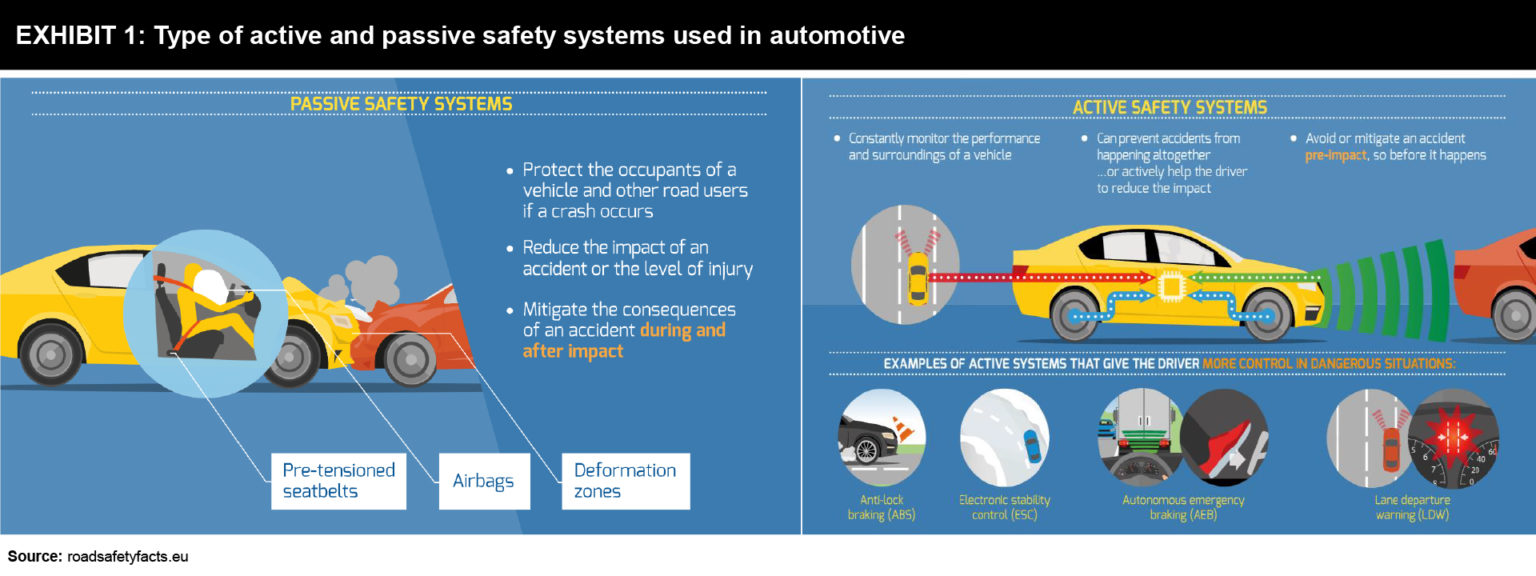

The integration of Passive-Active Safety Systems is improving with innovations in vision systems, expansion to passenger monitoring and V2X, as can be seen in Exhibit 2. Sensors and AI are helping to increase the effectiveness of existing Active and Passive Safety Systems. In the near future V2X (Vehicle-to-Everything) communications can enhance safety by covering scenarios beyond the line-of-sight of current sensors.
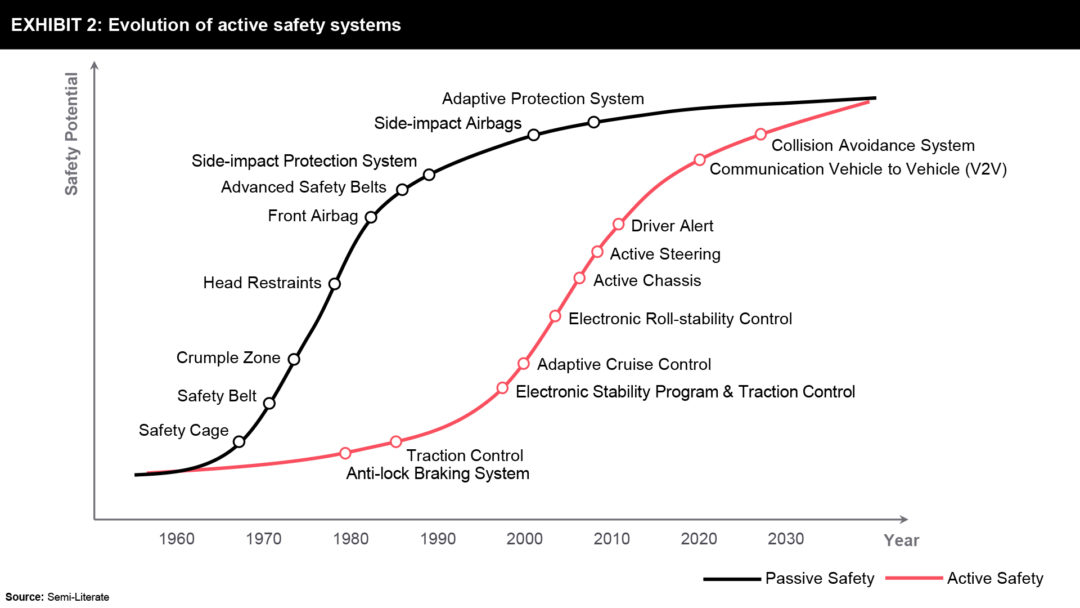

In the context of autonomous driving, Active Safety is progressing from providing warnings to taking control of safety tasks, e.g. emergency braking. Exhibit 3 shows different levels of autonomy based on SAE International and the overlap with Active Safety definitions.
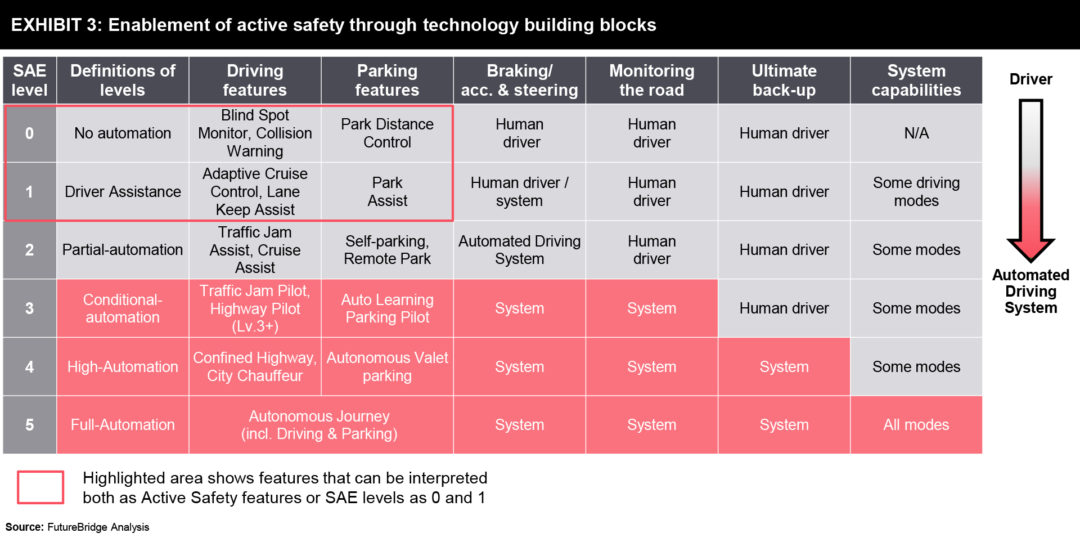

Enablement of Active Safety through technology building blocks
Exhibit 4 shows the technology building blocks like Radars, cameras, LiDARs, etc., used for Active Safety Systems.
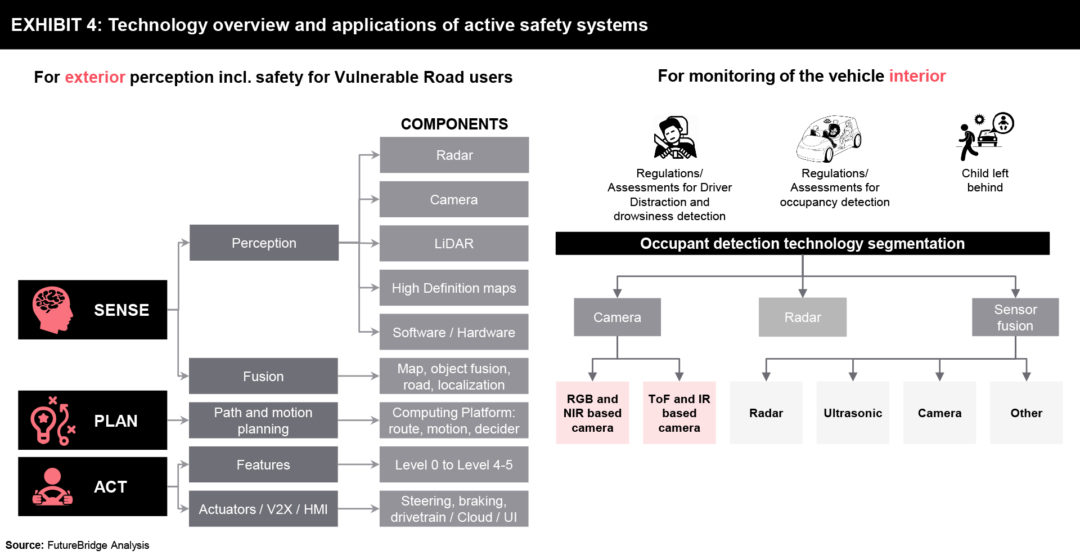

Evolution of Safety Regulations Globally
Europe leads the way in terms of regulations for mandatory installation of safety features. In Europe, the new safety features will become mandatory from 2022, except for direct vision for trucks and buses and enlarged head impact zone on cars and vans, which will follow later due to necessary structural design changes. The update of the General Safety Regulation mandates 15 safety features from Autonomous Emergency Braking to Driver monitoring (Exhibit 5).
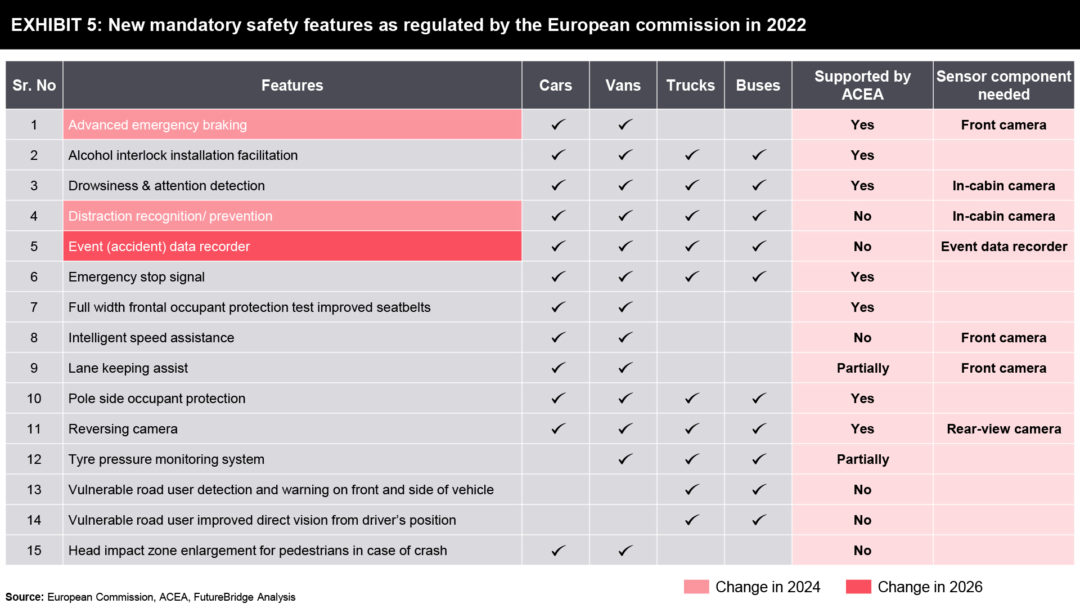

Regulation in Europe requires carmakers to fit sensors to mitigate driver distraction and drowsiness as well as improve road safety. Autonomous Emergency Braking will become mandatory in cars in Europe in 2022-24. Driver Monitoring Systems (DMS) technology is set to become part of the standard equipment in passenger cars in Europe for improved driver and semi-automated driving safety as it continues to be recognized by industry and regulatory groups such as the European Commission’s GSRII and NCAP. Today’s Passenger Monitoring systems provide warnings or need manual intervention. Also, sensors are being incorporated to mitigate distraction and drowsiness but their capabilities are limited today.
Under the new rules proposed by European Union, all motor vehicles (including trucks, buses, vans, and sport utility vehicles) will have to be equipped with Driver monitoring systems (DMS) including, driver drowsiness and attention warning systems as well as advanced driver distraction warning systems by mid-2022. The regulations will apply 30 months after entry into force with a longer application date provided for a limited number of features in order to allow car manufacturers to adapt their production to the new requirements.
Future safety systems such as V2X, Exit-to exit highway driving, etc. that are being developed need regulatory clarity to be rolled out in the market. Technologies like 5G, low-cost sensors (LiDAR, radar, etc.), system-on-chip, sensor fusion, Artificial Intelligence, etc. are enablers of future automotive safety systems, rolling out of which is directly changing the safety system development roadmap. Even though many of the future safety technologies listed above are expected to be in the market in the first half of the 2020s, the regulatory mandate is necessary for larger adoption, as shown in Exhibit 6.
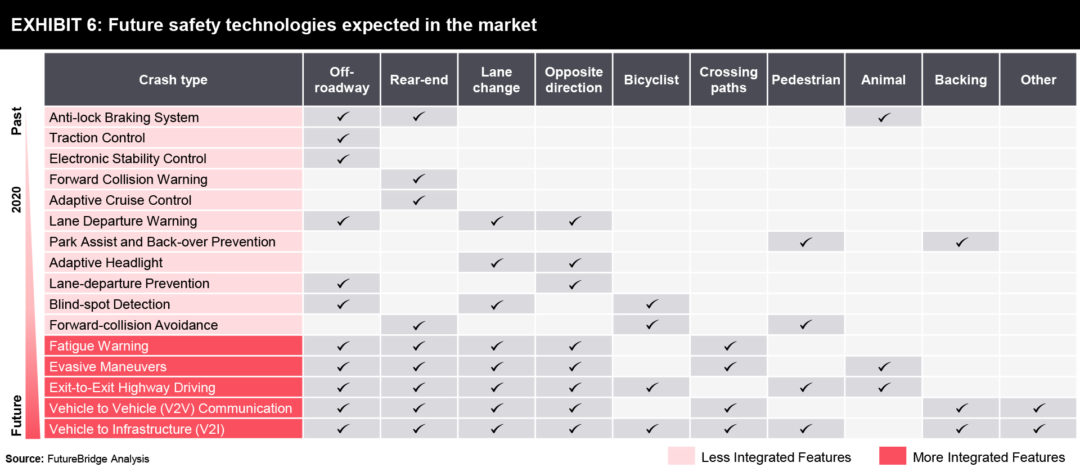

References
Share your focus area or question to engage with our Analysts through the Business Objectives service.
Submit My Business ObjectiveOur long-standing clients include some of the worlds leading brands and forward-thinking corporations.




























